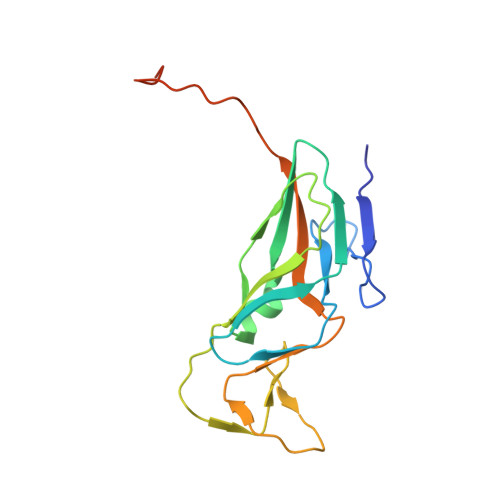Dissecting the link between the enzymatic activity and the SaPI inducing capacity of the phage 80 alpha dUTPase.
Alite, C., Humphrey, S., Donderis, J., Maiques, E., Ciges-Tomas, J.R., Penades, J.R., Marina, A.(2017) Sci Rep 7: 11234-11234
- PubMed: 28894239
- DOI: https://doi.org/10.1038/s41598-017-11234-9
- Primary Citation of Related Structures:
5NYZ, 5NZ2 - PubMed Abstract:
The trimeric staphylococcal phage-encoded dUTPases (Duts) are signalling molecules that induce the cycle of some Staphylococcal pathogenicity islands (SaPIs) by binding to the SaPI-encoded Stl repressor. To perform this regulatory role, these Duts require an extra motif VI, as well as the Dut conserved motifs IV and V. While the apo form of Dut is required for the interaction with the Stl repressor, usually only those Duts with normal enzymatic activity can induce the SaPI cycle. To understand the link between the enzymatic activities and inducing capacities of the Dut protein, we analysed the structural, biochemical and physiological characteristics of the Dut80α D95E mutant, which loses the SaPI cycle induction capacity despite retaining enzymatic activity. Asp95 is located at the threefold central channel of the trimeric Dut where it chelates a divalent ion. Here, using state-of-the-art techniques, we demonstrate that D95E mutation has an epistatic effect on the motifs involved in Stl binding. Thus, ion binding in the central channel correlates with the capacity of motif V to twist and order in the SaPI-inducing disposition, while the tip of motif VI is disturbed. These alterations in turn reduce the affinity for the Stl repressor and the capacity to induce the SaPI cycle.
- Instituto de Biomedicina de Valencia (IBV-CSIC) and CIBER de Enfermedades Raras (CIBERER), Jaume Roig 11, 46010, Valencia, Spain.
Organizational Affiliation:


















